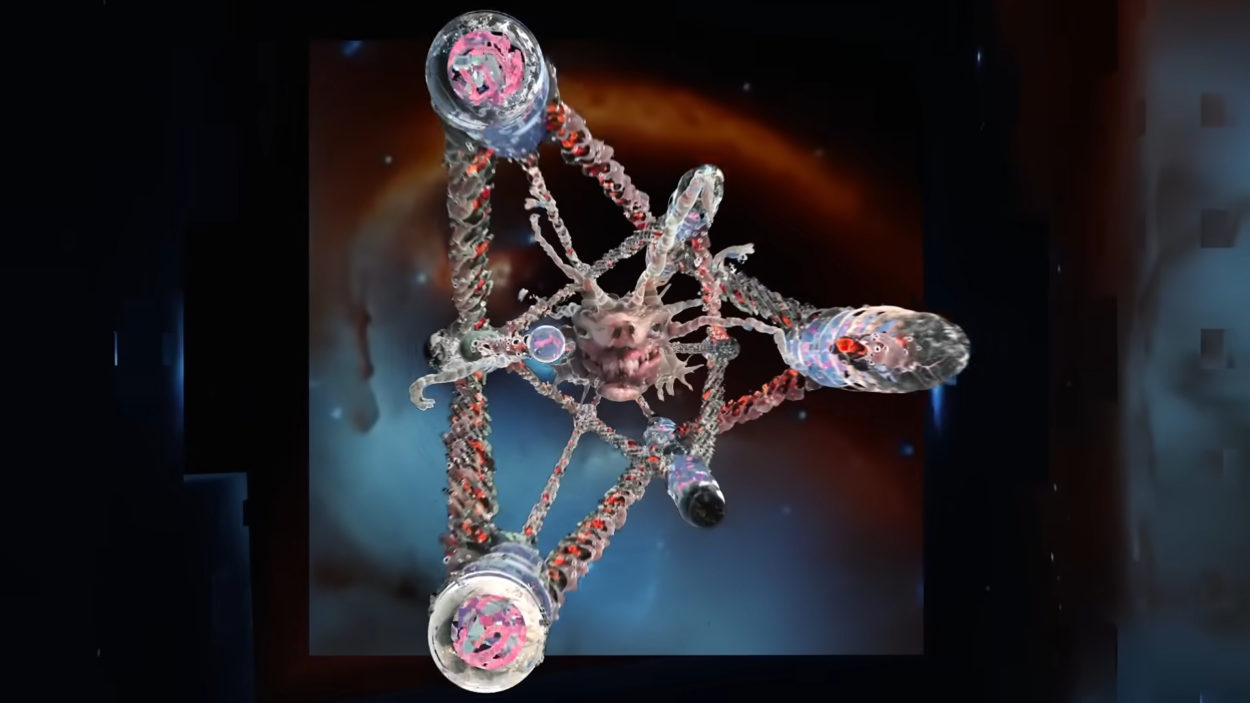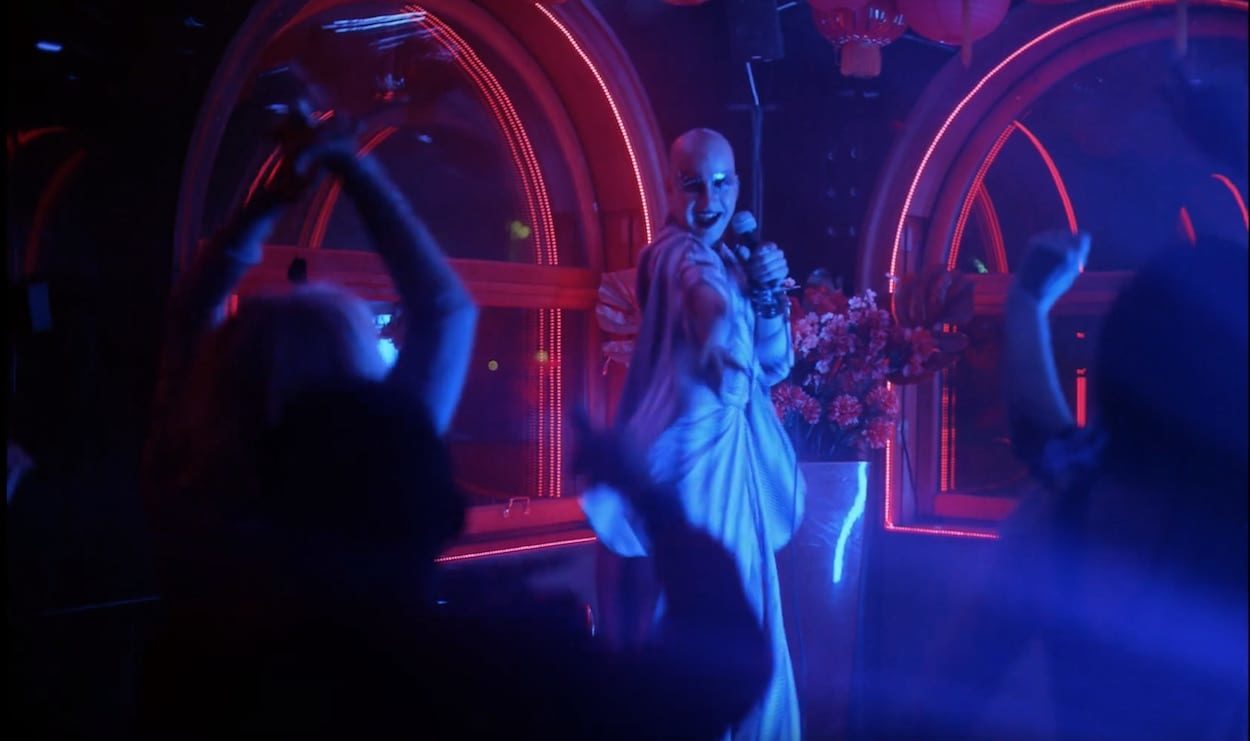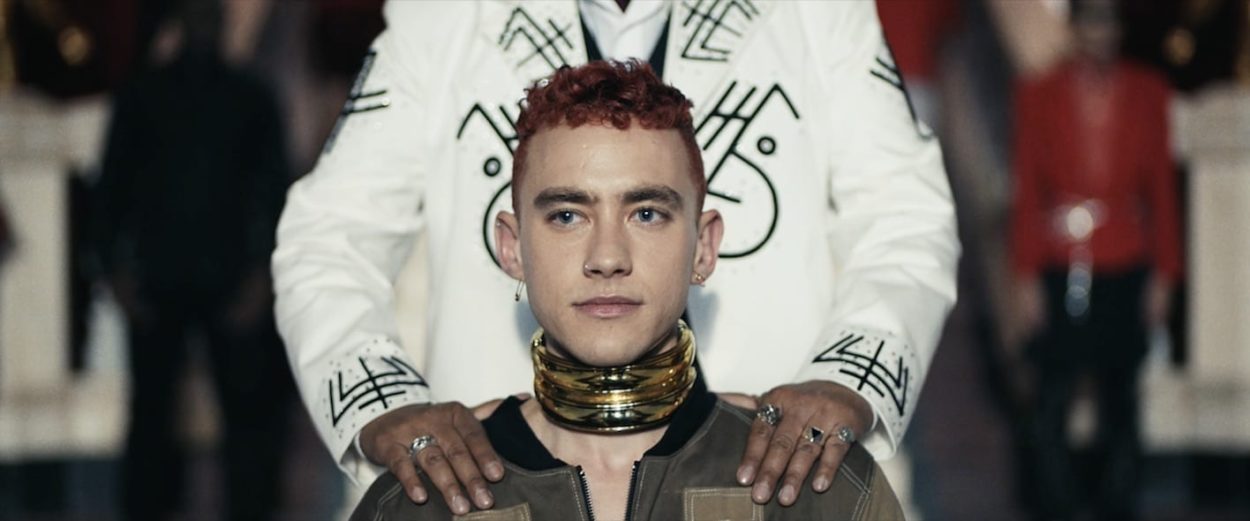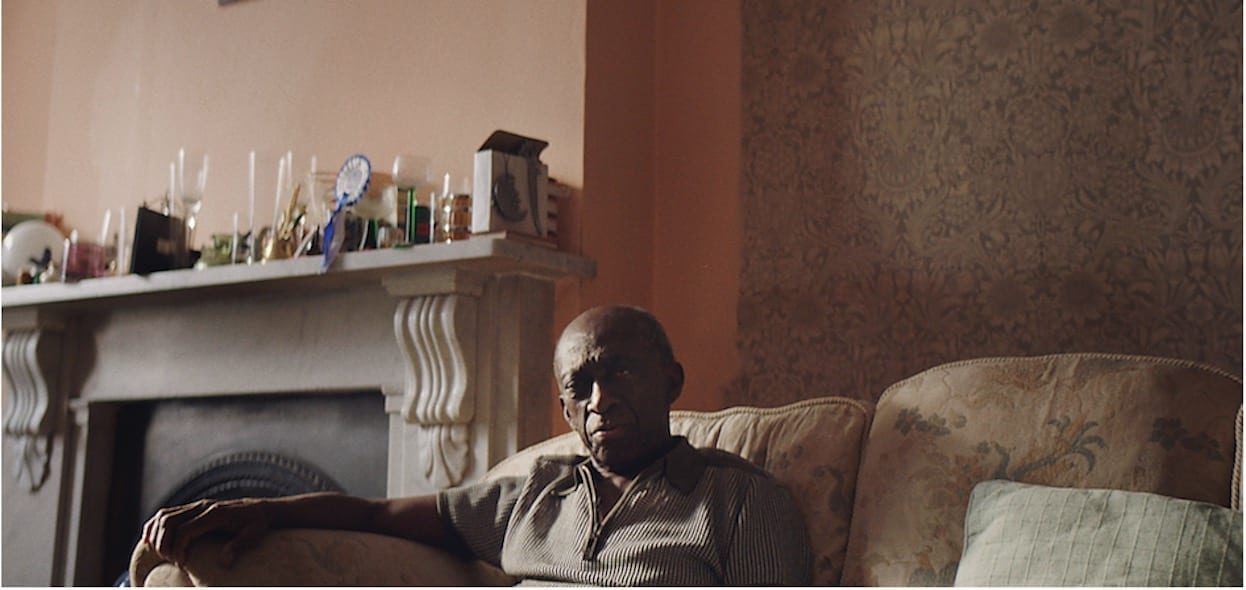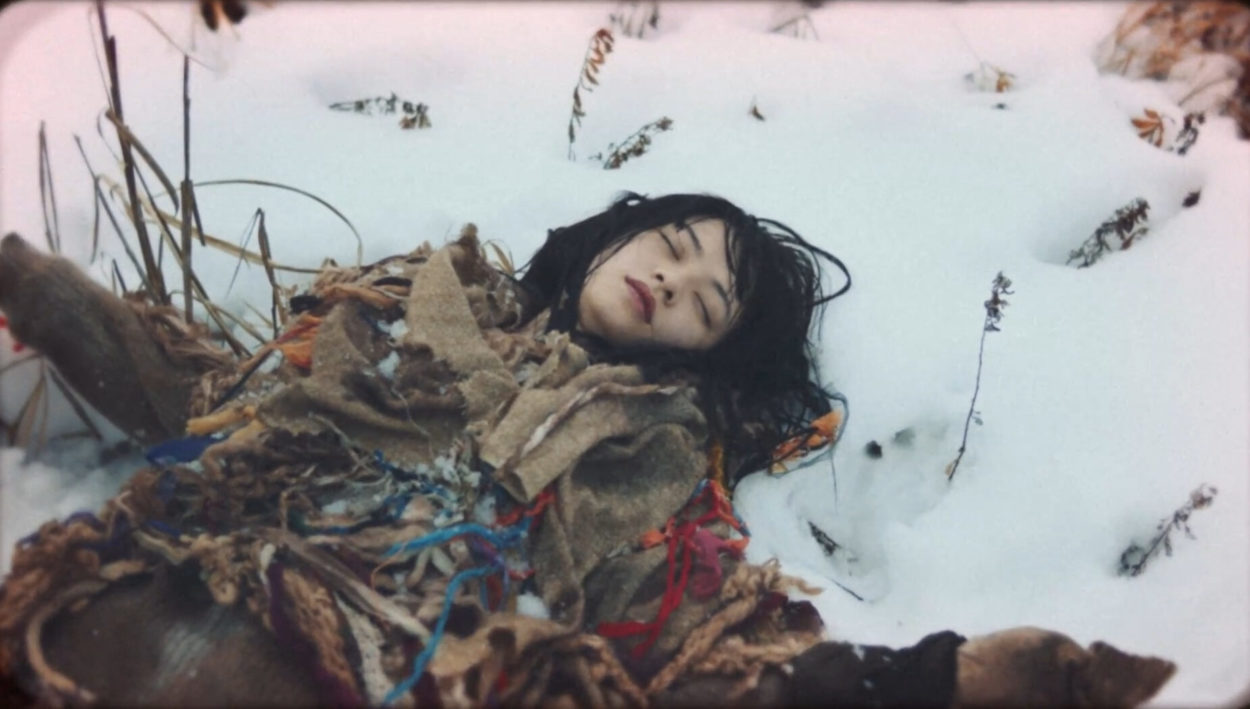Was your narrative in direct response to the lyrics? There’s mystery, rather ghostly, or is that his deep rooted longing for someone gone?
My idea for the story grew out of a perfect storm of theme, style and logistics. I knew that, with the budget and schedule that we had, I would have to set it in a single location, with only a couple of actors, so that immediately gave me some restrictions to work within – always very useful.
After that, it was the central question of the song – ‘why don’t you answer?’ – which led me down the ghost story route. The first concept that sprang to mind was, of course, the protagonist using a telephone, but I wanted to look for something a little less obvious, and I felt that as soon as you’re asking ‘why don’t you answer?’ of a stranger who’s standing in the room, you’re in a very creepy place.
As for the motivations behind the characters, I wanted to be deliberately ambiguous; beyond the fact that he’s trying to escape from something, and she’s trying to get his attention, everyone’s had their own interpretations, from a lost romance to guilt over a horrific murder.
There’s a new confidence in your tone, lighting, framing and visual story-telling overall. Were there some new tricks you’ve learnt that you wanted to apply to this new video?
The video that I directed prior to this one is an as-yet unreleased pop performance promo, shot in a documentary style. I was really pleased with the result, but as soon as the opportunity to shoot narrative returned, I was really keen to dive in and try some new things, as it’s where I feel most comfortable – and that time spent away from straight narrative did give me a little perspective; a lot of my choices were instinctual, but it always boiled down to choosing an angle not just because it looked cool, but because it suggested something about the world and the characters in it.
Beyond that, I stole a lot of lighting references from baroque painting, and Gregory Crewsdon’s photography, which gave me a very solid visual foundation, and I found the courage to do things like cross-fade and play with optical zooms which, previously, I’ve never been confident enough to do without worrying that the results would be tacky… and I think I got away with it, here.
What were the main challenges of the production and how did you overcome them?
One big challenge was finding the right hotel room, and we went through tons of different options, many of which were incredibly grotty. Originally, I wanted not to give a sense of place or time, and have a setting that could be anywhere in the world – for example, I deliberately chose actors who did not have particularly British features – but when we found our location, it seemed like a crime not to feature that view of the city. Beyond that it was, as always, a question of how much we could shoot in the time we had. I regret not having more of the female character in the film, but otherwise, I’m pretty pleased; we shot, edited and graded the whole thing in just three days.
Anything else?
One element that, I think, deserves a special mention is the grade. It was done by Houmam Abdallah at the Mill. Houmam is a director himself, and it was brilliant working with someone who, even in the final stages of the process, is so focused on storytelling. If you watch the video again, keep an eye on how much information you’re being fed just by the way that the colours bleed in and out of the frame.
LINKS:

